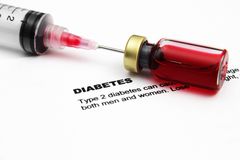
Nationwide, type 2 diabetes affects more than 20.9 million children and adults. California has not been immune; in fact, diabetes diagnoses in the state have increased by 35 percent over the past decade, becoming an unfortunate part of life for many of California’s citizens.
By 2011, Californians with diabetes comprised almost one-third of the state’s hospital stays among adults age 35 or older. A comprehensive study, produced by the UCLA Center for Health Policy Research and the California Center for Public Health Advocacy and released May 15, revealed several staggering facts about the financial and health effects Type 2 diabetes has in all California counties. It is evident that the disease is taking a toll on all Californians, particularly among non-white ethnic groups, especially Latinos, Asians, and African Americans.
45 Gallons, 39 Pounds
The study’s authors point to poor diet and lack of exercise as primary contributors to diabetes, citing obesity as a major risk factor. Along with maintaining a healthy, balanced diet, avoiding sugar-sweetened beverages can drastically reduce the likelihood of developing diabetes.
Soda and other sugary drinks contain massive amounts of liquid sugar that, unlike sugar in foods, is rapidly absorbed by the body. Drinking just one soda a day increases the risk of developing diabetes by 26 percent. And yet, the study points to a disquieting statistic: the average American drinks 45 gallons of sugary drinks a year, containing 39 pounds of sugar. This contributes directly to the development of diabetes.
Recently, California state Senator Bill Monning introduced SB 1000, the Sugar-Sweetened Beverages Safety Warning Act, which would require all bottles and cans of sugary drinks to display a label warning of the negative health effects of added sugar in beverages. The bill’s proponents expect the bill to effectively discourage consumption of these types of beverages by informing consumers of the health effects of drinking sugary beverages.
There are more policy options communities can adopt, however, when trying to reduce sugar-sweetened beverage consumption. ChangeLab Solutions’ Sugar-Sweetened Beverages Playbook outlines 10 effective reduction strategies for communities and states to consider to improve health.
Policy-Based Prevention
Making healthy choices easy for Californians will go a long way toward curbing diabetes and other chronic, preventable disease. Consider these policy-based preventative measures:
• Establish healthy food policies. Supporting healthy food zones and applying certification programs or licensing laws to retail food outlets would ensure that every community has ample access to healthy food choices.
• Restrict marketing of unhealthy foods and beverages in schools. Research has shown marketing plays a key role in children’s decision-making. Positive marketing strategies can help them choose the healthier options.
• Impose a tax on the sale of sugary drinks, which will create funds to help treat and prevent diabetes.
• Implement healthy vending policies, improving the quality of food and beverages carried in vending machines.
• Develop complete streets, which allow people to get around safely, even when they aren’t inside a car. This promotes the regular physical activity that is so critical to preventing obesity.
• Educate communities about the benefits of physical activity and healthy eating.
This new data will open many eyes to the ongoing personal and economic strain diabetes puts on all Californians. However, implementing effective policies can turn this crisis around and ensure everyone a better shot at living healthfully, actively, and diabetes-free.
Ian McLaughlin is a Senior Staff Attorney for ChangeLab Solutions.





